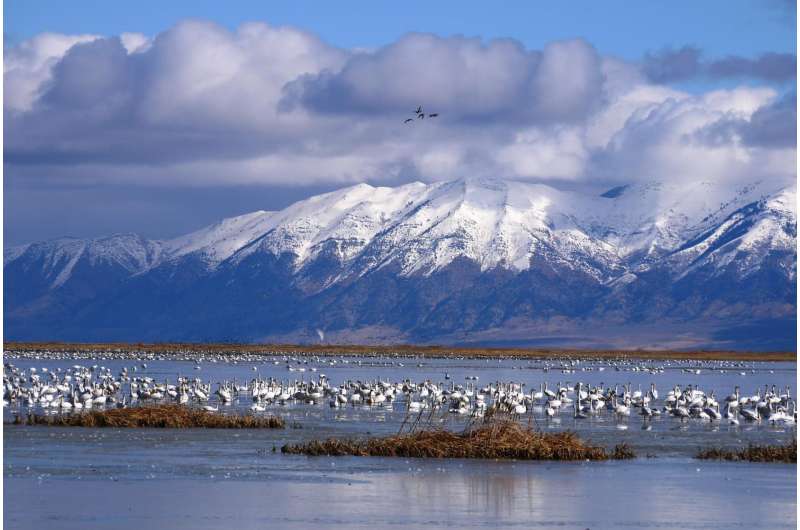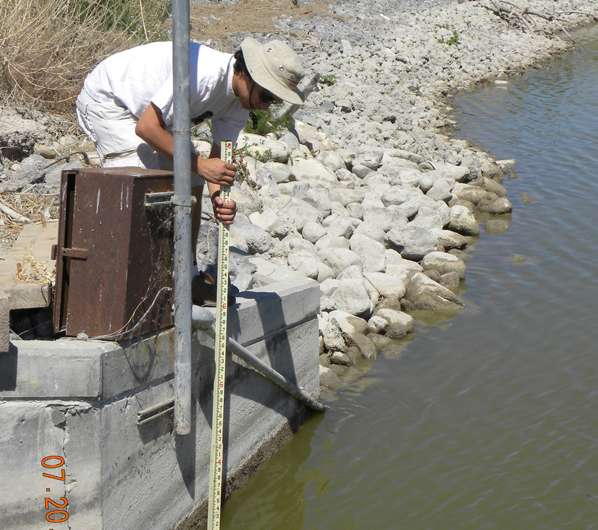Researchers develop model to improve arid-region wetlands

In arid Utah, a marshy wetland, teeming with aquatic life and migratory birds is among the most cherished natural resources in the state.
But with shrinking water supplies and invasive vegetation, effectively managing these unique landscapes is becoming increasingly difficult. That's why researchers at Utah State University have developed a new tool to help wetland managers create healthier, more productive wetlands and make them easier to manage. The team developed a computer model that produced two key findings: first, to more dramatically alter water levels in individual diked wetland units and, second, to focus efforts on invasive plant control at a specific time of year. The study was published Sept. 1 in Water Resources Research - a top interdisciplinary academic journal.
The team collaborated with managers and biologists and applied the computer model at the Bear River Migratory Bird Refuge, the largest freshwater component of the Great Salt Lake ecosystem. The Refuge is recognized internationally as an important feeding, resting and breeding ground for millions of migratory birds on the Pacific and Central Flyways.
Study co-author David Rosenberg, an associate professor of civil and environmental engineering at USU, says if refuge managers implement the model's recommendations, they could nearly double the area of productive wetland habitat using existing resources.
"We found that more dynamically altering the water levels in wetland units at the refuge improves habitat for migratory birds," said Rosenberg. Omar Alminagorta, a former postdoctoral associate at the Utah Water Research Lab and USU Associate Professor Karin M. Kettenring, a wetland ecologist, co-authored the study.

Rosenberg says adjusting water levels within wetland units more frequently also better corresponds to historical hydrologic conditions. The model also suggests focusing efforts to control invasive vegetation - particularly for phragmites, a widespread invasive grass - in late summer rather than early fall. These two changes, he explains, could significantly increase the habitat area for priority migratory bird species that use the refuge.
"The model shows us how to better use scarce water, labor and financial resources to achieve the goals set by the refuge managers each year," said Rosenberg.
The software tool could prove to be a valuable resource for refuge staff. It can quickly sort through millions of possible solutions and find one that offers the most benefit.
"The refuge is divided into 25 wetland units, and managers must decide how much water to give each unit each month of the year," said Rosenberg. "That's a very large number of decisions to make, and our brains have difficulty solving that complex of a problem. But the model can identify a solution that increases the area of wetland habitat with the best use of available water, labor and financial resources."
The study comes at a pivotal time. Around the globe, experts are calling for increased attention to wetlands and their dynamic ecosystems.
"Wetlands provide an incredible array of functions and services," said Rosenberg. "They create water storage and protect against flooding. They provide recreation, eco-tourism, hunting and the benefits of improved water quality and habitat for migratory birds and other wildlife."
More information: Omar Alminagorta et al, Systems modeling to improve the hydroecological performance of diked wetlands, Water Resources Research (2016). DOI: 10.1002/2015WR018105
Journal information: Water Resources Research
Provided by Utah State University

















